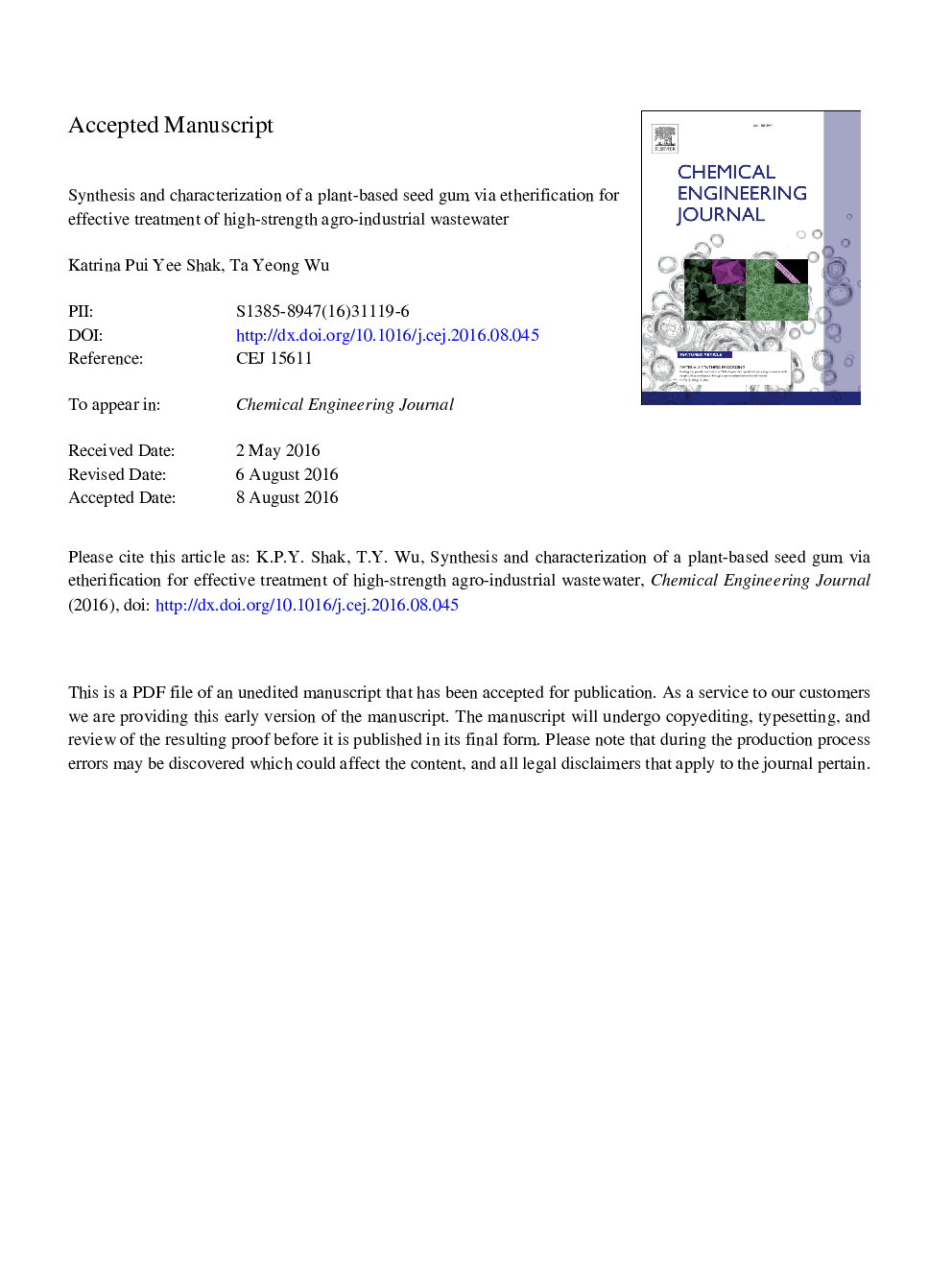| Article ID | Journal | Published Year | Pages | File Type |
|---|---|---|---|---|
| 4763509 | Chemical Engineering Journal | 2017 | 44 Pages |
Abstract
Similar to many types of high-strength agro-industrial wastewater, palm oil mill effluent (POME) contains countless colloidal solids and particles which are negatively charged. In this study, cationic plant-based seed gum derived from Cassia obtusifolia was developed to study its potential in treatment of POME. Quaternized C. obtusifolia seed gum (seed gum-CHPTAC) was obtained through seed gum etherification with N-(3-chloro-2-hydroxypropyl) trimethyl ammonium chloride (CHPTAC). The influence of cationic monomer concentration, catalyst concentration, reaction temperature, and reaction time were studied for the synthesis based on total suspended solids (TSS) and chemical oxygen demand (COD) removals from the POME. The recommended reaction conditions removed 87 and 52% of TSS and COD, respectively: 19 Ã 10â3 mol of CHPTAC, 6 Ã 10â2 mol of NaOH, 50 °C, and 5 h. C. obtusifolia seed gum exhibited enhanced viscosity, higher magnitude of zeta potential (+6.41 mV) and changes in composition, thermal behaviour, and surface morphology after undergoing successful etherification process. Furthermore, the changes in properties led to its superior effectiveness as compared to its natural form in treatment of POME.
Keywords
Related Topics
Physical Sciences and Engineering
Chemical Engineering
Chemical Engineering (General)
Authors
Katrina Pui Yee Shak, Ta Yeong Wu,
